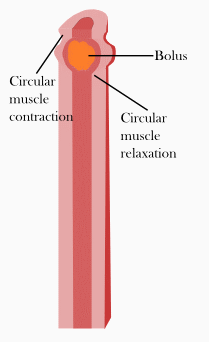Same old same old
on 4/1/13 10:05 pm - Califreakinfornia , CA
|
Califreakinfornia , CA Lap Band (06/19/06) Member Since: 12/20/05 [Latest Posts] |
Post Date: 6/7/12 8:14 am ...and it's very painfull, and the longer this goes on...the more severe the pain will become, and the risks of permanent damage are very real. If your band is functioning perfectly, then just bookmark this for future reference, hopefully you will never ever have to lay eyes on it again. If your still going forward with having a LAGB implanted, then just bookmark this for future reference, hopefully you will never ever have to lay eyes on it again. How does the normal esophagus function?The esophagus has three functional parts. The uppermost part is the upper esophageal sphincter, a specialized ring of muscle that forms the upper end of the tubular esophagus and separates the esophagus from the throat. The upper sphincter remains closed most of the time to prevent food in the main part of the esophagus from backing up into the throat. The main part of the esophagus is referred to as the body of the esophagus, a long, muscular tube approximately 20 cm (8 in) in length. The third functional part of the esophagus is the lower esophageal sphincter, a ring of specialized esophageal muscle at the junction of the esophagus with the stomach. Like the upper sphincter, the lower sphincter remains closed most of the time to prevent food and acid from backing up into the body of the esophagus from the stomach.What is achalasia?Achalasia is a rare disease of the muscle of the esophagus (swallowing tube). The term achalasia means "failure to relax" and refers to the inability of the lower esophageal sphincter (a ring of muscle situated between the lower esophagus and the stomach) to open and let food pass into the stomach. As a result, patients with achalasia have difficulty in swallowing food. http://www.medicinenet.com/achalasia/article.htm#tocb What is dysphagia?Dysphagia is the medical term for the symptom of difficulty swallowing, derived from the Latin and Greek words meaning difficulty eating. http://www.medicinenet.com/swallowing/article.htm What is esophageal spasm?
Esophageal spasms are irregular, uncoordinated, and sometimes powerful contractions of the esophagus, the tube that carries food from the mouth to the stomach. Normally, contractions of the esophagus are coordinated, moving the food through the esophagus There are two main types of esophageal spasm:
You can have both types of esophageal spasms. What is achalasia?www.medicinenet.com/achalasia/article.htm#tocb Esophageal manometry Another test, esophageal manometry, can demonstrate specifically the abnormalities of muscle function that are characteristic of achalasia, that is, the failure of the muscle of the esophageal body to contract with swallowing and the failure of the lower esophageal sphincter to relax. For manometry, a thin tube that measures the pressure generated by the contracting esophageal muscle is passed through the nose, down the back of the throat and into the esophagus. In a patient with achalasia, no peristaltic waves are seen in the lower half of the esophagus after swallows, and the pressure within the contracted lower esophageal sphincter does not fall with the swallow. In patients with vigorous achalasia, a strong simultaneous contraction of the muscle may be seen in the lower esophageal body. An advantage of manometry is that it can diagnose achalasia early in its course at a time at which the video-esophagram may be normal.EsophagusAfter food is chewed into a bolus, it is swallowed and moved through the esophagus. Smooth muscles contract behind the bolus to prevent it from being squeezed back into the mouth. Then rhythmic, unidirectional waves of contractions will work to rapidly force the food into the stomach. This process works in one direction only and its sole purpose is to move food from the mouth into the stomach.[2] In the esophagus, two types of peristalsis occur. 
Esophageal peristalsis is typically assessed by performing an esophageal motility study. http://www.obesityhelp.com/forums/lapband/4539222/Youre-not- quot-Stuck-quot-your-band-is-causing-pressure-on/ www.obesityhelp.com/group/failed_lap_bands/  |
I hope you find some relief soon. For me, by the end, I could eat or drink anything and I was totally miserable.
HW - 287 (12/2007); GW - 165; CW - 164....proudly wearing a size 8!On my journey from LapBand to VSG.....LapBand on 12/19/07, LapBand removal on 8/8/12 and sleeve on1/23/13! Consider joining me at Band2Sleeve!( http://www.obesityhelp.com/group/Band2Sleeve/) Friend me on MyFitnessPal too! I'm gorditabonita74.









